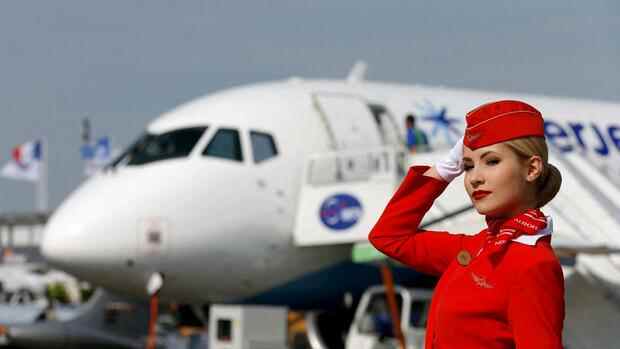The Russian airline Aeroflot has bought some of the Russian-made regional jets. Beyond that, however, the aircraft hardly found any customers.
(Photo: Reuters)
If you visit the Technikmuseum in Speyer, a detour to the Antonow AN 22 is a must. In the huge hold of the cargo plane, it becomes clear what aeronautical engineers achieved in the 1960s. The largest series-built propeller aircraft is a legend.
Today, Antonov’s headquarters are in Ukraine. But the aircraft was developed in the Soviet Union at the time, with the significant participation of Russian aeronautical engineers such as the namesake Oleg Konstantinovich Antonov, who was born near Moscow.
Antonov, Sukhoi or Tupolev – these names stand for the golden era of the Russian aviation industry. Above all, the latter two also stand for the fall into insignificance. It began with the breakup of the Soviet Union and is now showing itself with full force in the Ukraine war.
For years, Russian airlines have preferred to fly with Western equipment, which is becoming increasingly difficult due to sanctions. In times of need, some old Russian jets are rolled out of the hangars. But the hope of a comeback by domestic aircraft manufacturers is deceptive.
Top jobs of the day
Find the best jobs now and
be notified by email.
Russian aviation cannot become independent again quickly. As much as Germany has relied on supplies of raw materials from Russia, the Kremlin has relied on its role as a supplier. Far too little has been invested in technology – especially in aviation.
Airbus and Boeing have overtaken the former icons in Russia
Airbus and Boeing have long since rushed. The Sukhoi Superjet 100, which took off a few years ago to defy the European-American duopoly, shows just how dependent Russian aircraft manufacturers are on Western know-how. Replacing Western components in the jet with Russian ones has recently begun. But more than 50 percent of the parts still come from the west.
>> Read about this: Nationalism – the new trauma of aviation
In addition, success is limited. From a commercial point of view, it is not a very effective aircraft, Russian Transport Minister Vitaly Savelyev recently complained surprisingly honestly. Even the TU-214 – production of the medium-haul aircraft is now to be ramped up – will not save the situation. The production capacities are too low and the kerosene consumption of the aircraft is also considered too high.
This is a debacle for the airlines in Russia. They are slowly running out of equipment and there is no suitable replacement in sight. The Russian government now wants to support airlines and airports with financial aid. But maybe that stabilizes, it doesn’t give the industry more independence.
More: No spare parts, no new jets – Russian aviation is threatened with collapse.
